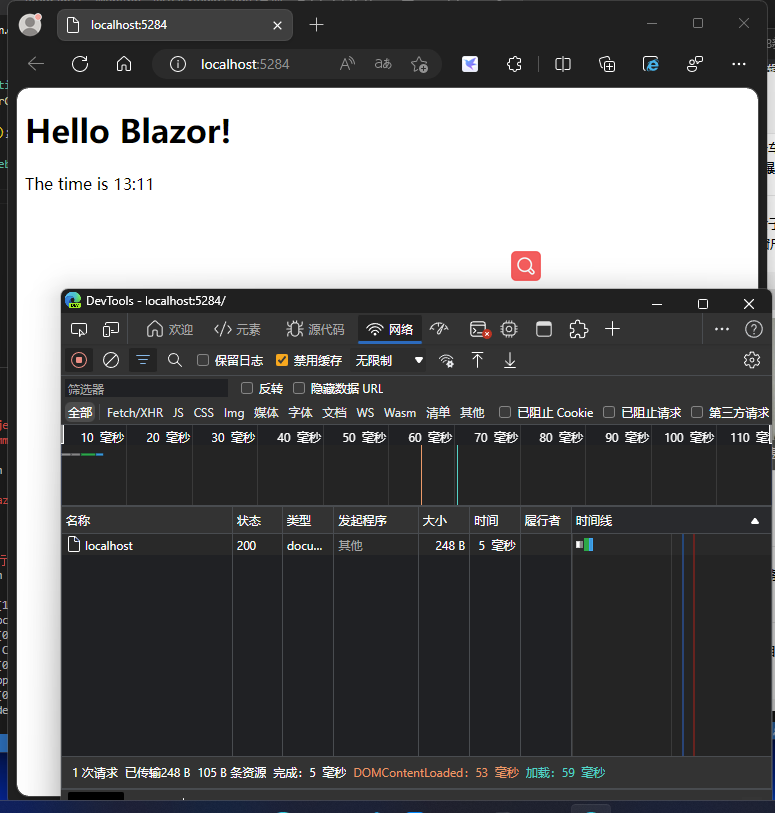System.Array.Sort<T> 是.NET内置的排序方法, 灵活且高效, 大家都学过一些排序算法,比如冒泡排序,插入排序,堆排序等,不过你知道这个方法背后使用了什么排序算法吗?
先说结果, 实际上 Array.Sort 不止使用了一种排序算法, 为了保证不同的数据量的排序场景,都能有一个高性能的表现,实现中包括了插入排序,堆排序和快速排序, 接下来从通过源码看看它都做了哪些事情。
Array.Sort
https://source.dot.net/#System.Private.CoreLib/Array.cs,ec5718fae85b7640
public static void Sort<T>(T[] array)
{
if (array == null)
ThrowHelper.ThrowArgumentNullException(ExceptionArgument.array);
if (array.Length > 1)
{
var span = new Span<T>(ref MemoryMarshal.GetArrayDataReference(array), array.Length);
ArraySortHelper<T>.Default.Sort(span, null);
}
}
这里我们对 int 数组进行排序, 先看一下这个Sort方法, 当数组的长度大于1时, 会先把数组转成 Span 列表, 然后调用了内部的ArraySortHelper的Default对象的Sort方法。
ArraySortHelper
[TypeDependency("System.Collections.Generic.GenericArraySortHelper`1")]
internal sealed partial class ArraySortHelper<T>
: IArraySortHelper<T>
{
private static readonly IArraySortHelper<T> s_defaultArraySortHelper = CreateArraySortHelper();
public static IArraySortHelper<T> Default => s_defaultArraySortHelper;
[DynamicDependency("#ctor", typeof(GenericArraySortHelper<>))]
private static IArraySortHelper<T> CreateArraySortHelper()
{
IArraySortHelper<T> defaultArraySortHelper;
if (typeof(IComparable<T>).IsAssignableFrom(typeof(T)))
{
defaultArraySortHelper = (IArraySortHelper<T>)RuntimeTypeHandle.CreateInstanceForAnotherGenericParameter((RuntimeType)typeof(GenericArraySortHelper<string>), (RuntimeType)typeof(T));
}
else
{
defaultArraySortHelper = new ArraySortHelper<T>();
}
return defaultArraySortHelper;
}
}
Default 会根据是否实现了 IComparable<T> 接口来创建不同的 ArraySortHelper, 因为上面我对int数组进行排序, 所以调用的是 GenericArraySortHelper 的Sort方法。
GenericArraySortHelper
https://source.dot.net/#System.Private.CoreLib/ArraySortHelper.cs,280
internal sealed partial class GenericArraySortHelper<T>
where T : IComparable<T>
{
// Do not add a constructor to this class because ArraySortHelper<T>.CreateSortHelper will not execute it
#region IArraySortHelper<T> Members
public void Sort(Span<T> keys, IComparer<T>? comparer)
{
try
{
if (comparer == null || comparer == Comparer<T>.Default)
{
if (keys.Length > 1)
{
// For floating-point, do a pre-pass to move all NaNs to the beginning
// so that we can do an optimized comparison as part of the actual sort
// on the remainder of the values.
if (typeof(T) == typeof(double) ||
typeof(T) == typeof(float) ||
typeof(T) == typeof(Half))
{
int nanLeft = SortUtils.MoveNansToFront(keys, default(Span<byte>));
if (nanLeft == keys.Length)
{
return;
}
keys = keys.Slice(nanLeft);
}
IntroSort(keys, 2 * (BitOperations.Log2((uint)keys.Length) + 1));
}
}
else
{
ArraySortHelper<T>.IntrospectiveSort(keys, comparer.Compare);
}
}
catch (IndexOutOfRangeException)
{
ThrowHelper.ThrowArgumentException_BadComparer(comparer);
}
catch (Exception e)
{
ThrowHelper.ThrowInvalidOperationException(ExceptionResource.InvalidOperation_IComparerFailed, e);
}
}
首先会判断排序的类型是否是浮点型, 如果是的会做一些排序的调整优化,然后调用了 IntroSort 方法,并传入了两个参数,第一个Keys就是数组的Span列表,那第二个是什么呢? 它是一个int类型的depthLimit参数,这里简单点理解就是算出数组的深度,因为后边会根据这个值进行递归操作,然后进入到 IntroSort 方法。
IntroSort
到这个方法这里就清晰很多了, 这是Array.Sort<T> 排序的主要内容,接着往下看
https://source.dot.net/#System.Private.CoreLib/ArraySortHelper.cs,404
private static void IntroSort(Span<T> keys, int depthLimit)
{
Debug.Assert(!keys.IsEmpty);
Debug.Assert(depthLimit >= 0);
int partitionSize = keys.Length;
while (partitionSize > 1)
{
if (partitionSize <= Array.IntrosortSizeThreshold)
{
if (partitionSize == 2)
{
SwapIfGreater(ref keys[0], ref keys[1]);
return;
}
if (partitionSize == 3)
{
ref T hiRef = ref keys[2];
ref T him1Ref = ref keys[1];
ref T loRef = ref keys[0];
SwapIfGreater(ref loRef, ref him1Ref);
SwapIfGreater(ref loRef, ref hiRef);
SwapIfGreater(ref him1Ref, ref hiRef);
return;
}
InsertionSort(keys.Slice(0, partitionSize));
return;
}
if (depthLimit == 0)
{
HeapSort(keys.Slice(0, partitionSize));
return;
}
depthLimit--;
int p = PickPivotAndPartition(keys.Slice(0, partitionSize));
// Note we've already partitioned around the pivot and do not have to move the pivot again.
IntroSort(keys[(p+1)..partitionSize], depthLimit);
partitionSize = p;
}
}
第一次进入方法时,partitionSize 就是数组的长度, 这里有一个判断条件,如下, IntrosortSizeThreshold 是一个值为16的常量,它是一个阈值, 如果数组的长度小于等于16, 那么使用的就是插入排序(InsertionSort), 为什么是16呢?这里通过注释了解到, 从经验上来看, 16及以下得数组长度使用插入排序的效率是比较高的。
if (partitionSize <= Array.IntrosortSizeThreshold)
{
if (partitionSize == 2)
{
SwapIfGreater(ref keys[0], ref keys[1]);
return;
}
if (partitionSize == 3)
{
ref T hiRef = ref keys[2];
ref T him1Ref = ref keys[1];
ref T loRef = ref keys[0];
SwapIfGreater(ref loRef, ref him1Ref);
SwapIfGreater(ref loRef, ref hiRef);
SwapIfGreater(ref him1Ref, ref hiRef);
return;
}
InsertionSort(keys.Slice(0, partitionSize));
return;
}
InsertionSort
如果数组的长度小于等于3时, 直接进行对比交换, 如果长度大约3并且小于等于16的话, 使用插入排序(InsertionSort), 方法内容如下:
https://source.dot.net/#System.Private.CoreLib/ArraySortHelper.cs,537
private static void InsertionSort(Span<T> keys)
{
for (int i = 0; i < keys.Length - 1; i++)
{
T t = Unsafe.Add(ref MemoryMarshal.GetReference(keys), i + 1);
int j = i;
while (j >= 0 && (t == null || LessThan(ref t, ref Unsafe.Add(ref MemoryMarshal.GetReference(keys), j))))
{
Unsafe.Add(ref MemoryMarshal.GetReference(keys), j + 1) = Unsafe.Add(ref MemoryMarshal.GetReference(keys), j);
j--;
}
Unsafe.Add(ref MemoryMarshal.GetReference(keys), j + 1) = t!;
}
}
HeapSort
if (depthLimit == 0)
{
HeapSort(keys.Slice(0, partitionSize));
return;
}
depthLimit--;
因为后边是递归操作,所以每次 depthLimit 都会减1, 当深度为0排序还没有完成的时候,就会直接使用堆排序(HeapSort),方法内容如下:
https://source.dot.net/#System.Private.CoreLib/ArraySortHelper.cs,990
private static void HeapSort(Span<TKey> keys, Span<TValue> values)
{
Debug.Assert(!keys.IsEmpty);
int n = keys.Length;
for (int i = n >> 1; i >= 1; i--)
{
DownHeap(keys, values, i, n);
}
for (int i = n; i > 1; i--)
{
Swap(keys, values, 0, i - 1);
DownHeap(keys, values, 1, i - 1);
}
}
private static void DownHeap(Span<TKey> keys, Span<TValue> values, int i, int n)
{
TKey d = keys[i - 1];
TValue dValue = values[i - 1];
while (i <= n >> 1)
{
int child = 2 * i;
if (child < n && (keys[child - 1] == null || LessThan(ref keys[child - 1], ref keys[child])))
{
child++;
}
if (keys[child - 1] == null || !LessThan(ref d, ref keys[child - 1]))
break;
keys[i - 1] = keys[child - 1];
values[i - 1] = values[child - 1];
i = child;
}
keys[i - 1] = d;
values[i - 1] = dValue;
}
QuickSort
int p = PickPivotAndPartition(keys.Slice(0, partitionSize), values.Slice(0, partitionSize));
IntroSort(keys[(p+1)..partitionSize], values[(p+1)..partitionSize], depthLimit);
partitionSize = p;
这里调用了另外一个方法 PickPivotAndPartition,
Pivot 基准, Partition 分区, 这就是快速排序呀!而且还是使用了尾递归的快速排序,其中也使用了三数取中法,方法内容如下
https://source.dot.net/#System.Private.CoreLib/ArraySortHelper.cs,945
private static int PickPivotAndPartition(Span<TKey> keys, Span<TValue> values)
{
Debug.Assert(keys.Length >= Array.IntrosortSizeThreshold);
int hi = keys.Length - 1;
// Compute median-of-three. But also partition them, since we've done the comparison.
int middle = hi >> 1;
// Sort lo, mid and hi appropriately, then pick mid as the pivot.
SwapIfGreaterWithValues(keys, values, 0, middle); // swap the low with the mid point
SwapIfGreaterWithValues(keys, values, 0, hi); // swap the low with the high
SwapIfGreaterWithValues(keys, values, middle, hi); // swap the middle with the high
TKey pivot = keys[middle];
Swap(keys, values, middle, hi - 1);
int left = 0, right = hi - 1; // We already partitioned lo and hi and put the pivot in hi - 1. And we pre-increment & decrement below.
while (left < right)
{
if (pivot == null)
{
while (left < (hi - 1) && keys[++left] == null) ;
while (right > 0 && keys[--right] != null) ;
}
else
{
while (GreaterThan(ref pivot, ref keys[++left])) ;
while (LessThan(ref pivot, ref keys[--right])) ;
}
if (left >= right)
break;
Swap(keys, values, left, right);
}
// Put pivot in the right location.
if (left != hi - 1)
{
Swap(keys, values, left, hi - 1);
}
return left;
}
总结
本文主要介绍了System.Array.Sort<T> 排序的内部实现, 发现它使用了插入排序,堆排序和快速排序,大家有兴趣可以看一下Java或者Golang的排序实现,希望对您有用。
到此这篇关于.NET 排序 Array.Sort<T> 实现分析的文章就介绍到这了,更多相关.NET 排序 Array.Sort<T>内容请搜索阿兔在线工具以前的文章或继续浏览下面的相关文章希望大家以后多多支持阿兔在线工具!




